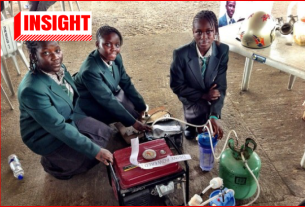
The last update on Nov. 27, 2023
Updated: China clarified there is ‘no new pathogen’
Recently, on November 24th, China provided additional data. WHO stated that no “unusual or novel pathogens” were detected, attributing the increase in respiratory illnesses to multiple known pathogens. The surge in cases is linked to easing COVID-19 restrictions, with the WHO urging residents to take precautions such as vaccination and mask-wearing. Experts believe the increase in respiratory infections may be due to reduced immunity from previous lockdown measures. The WHO and other global health organizations are closely monitoring the situation.
(Source: BBC)
Throughout this week, numerous social media users have voiced their concerns regarding the new epidemic in China. The exact cause of the outbreak remains unknown.
X (Twitter) users have shared news regarding the crisis in hospitals in Beijing and other cities in China. The number of cases has reached such a high level that hospitals are unable to provide comprehensive treatment.
Dr. Eric Feigl-Ding, Chair of the NECSI Department of Public Health at the New England Complex Systems Institute and a member of the expert committee of the World Health Organization (WHO), recently shared a post on the current epidemic through account X. In the post, he explains the following:
An emerging outbreak of pneumonia in China has overwhelmed pediatric hospitals in Beijing and Liaoning, leading to the suspension of classes in many schools. The outbreak is characterized by symptoms such as high fever, pulmonary nodules, and a lack of coughing. The exact cause of the outbreak is currently unknown, but there is speculation that it could be due to Mycoplasma pneumoniae or a new virus. The epidemic is not confined to a specific area and has spread throughout the country, raising concerns about the potential for a pandemic.
Chinese hospitals are struggling to handle the influx of sick children, and there have been reports of drug resistance and mixed infections. The severity of the outbreak is still uncertain, but the lack of available bronchoscopies for mild cases is a cause for concern. The official news outlet in China attributes the outbreak to influenza, adenovirus, RSV, and rhinovirus, but there are suspicions of a cover-up. The increase in influenza A cases and reports of avian H9N2 in China further contribute to these concerns. It is crucial to search for information in Asian languages to gain a comprehensive understanding of the situation.
Most recently, on November 22, the World Health Organization (WHO) released the statement expressing concern about an outbreak of respiratory illness in children in northern China. The WHO has requested urgent answers from China and is demanding additional information.
According to WHO’s statement, detailed information has been requested from China regarding the outbreak of pneumonia in several children’s hospitals. The disease has not yet been accurately diagnosed, and the unclear information about its origin and severity is putting immense pressure on healthcare facilities and causing significant distress among medical experts.
The recent outbreak has attracted attention from multiple news outlets, with reports emphasizing the significance of obtaining precise and timely information. Global news agencies like CNBC, The Telegraph and TIME have covered this outbreak, underscoring the need to comprehend the origins, transmission, and potential consequences of this respiratory illness. They have also documented the alarming impact on children and the strain experienced in hospitals throughout China.
This outbreak has caused widespread anxiety both domestically and internationally, as people eagerly await updates on the situation and containment measures. The uncertainty surrounding this outbreak has led to increased anxiety and vigilance among the general public.
This outbreak has had more than just health consequences, it has also impacted daily life, including travel and economic activities. This is in line with the latest report from the Tourism Authority of Thailand (TAT), which states that since the temporary exemption of visa requirements for Chinese tourists from September 25, 2022, to February 29, 2023, it has been almost two months and the measures have not had a significant positive effect, and the number of Chinese tourists entering Thailand is lower than expected. (Source: Prachachat)
Follow us and stay up to date with our latest fact checks.
Facebook | Twitter | Instagram | LINE | TikTok

Title:The respiratory Illness outbreak in China is causing global concern
Written By: Cielito WangResult: Insight




